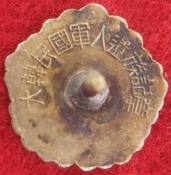
Soldiers Bereaved Family Medal 군인유족기장 (軍人遺族記章)
Commonly referred to as the “Next of Kin Medal”, “Killed In Action Medal” or more simply as the K.I.A. Medal. It is awarded to bereaved families of servicemen, who were either, killed in action, died of war wounds or died from disease contracted at the front. It was established on Apr. 9, 1951 by Presidential Decree #470.
It is intriguing that this medal is almost identical to the Japanese Bereaved Family Medal. Korea was occupied by Japan from 1910 to the end of WWII. During WWII, more than 240,000 Koreans were conscripted into the Japanese army and approx. 22,182 of them were killed in action. Hundreds of thousands of Koreans died in Japanese forced labor camps and factories. Purportedly, some 30,000 to 70,000(?) Koreans were killed by the A bomb at Hiroshima. With the amount of animosity that Koreans had toward Japan, one can only speculate on Korea’s reasoning for creating a virtually identical medal. I can only speculate that so many Korean families received the Japanese medal during WWII, that the newly created Republic of Korea wanted to keep some form of continuity. On the reverse of the medal, behind the Mugunghwa Flower, you will find the Chinese inscription 大韓民國軍人遺族記章 (대한민국군인유족기장) Republic of Korea Soldier’s Bereaved Family Medal.

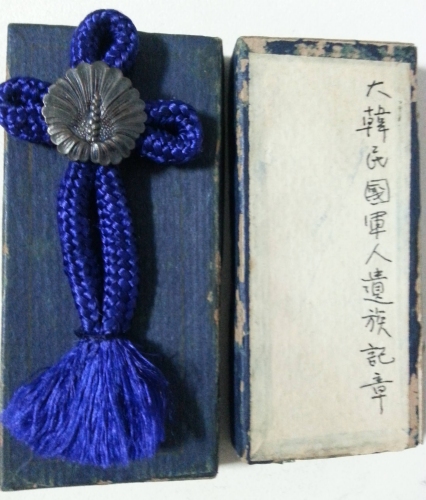

In addition to the medal, the Bereaved Family would receive a small plaque to post on the gate to their property, which signifies that they had lost a family member. The inscription down the center 충절의집 translates to “House of Loyalty”. Later, these plaques were done in plastic with a slightly different inscription 忠節의집. The Chinese characters on this plate translate into Korean characters as 충절. Making the two inscriptions identical. There is a third door plate with a longer inscription “Family of soldier who died in military
service” 武功軍人遺家族의집 (무공군인유가족의집). Japan utilized similar doorplates before and during WWII, see the examples below.
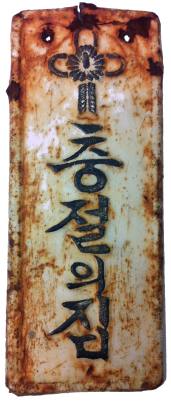
Original Door Post Plaque in metal. Probably dates to the late 1940s to the 1950s.
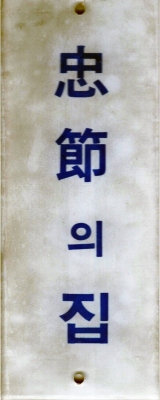
Later Door Post Plaque in Plastic. (Darkened from age and sunlight.) Probably dates to the 1960s or early 1970s.

service” 武功軍人遺家族의집 (무공군인유가족의집)
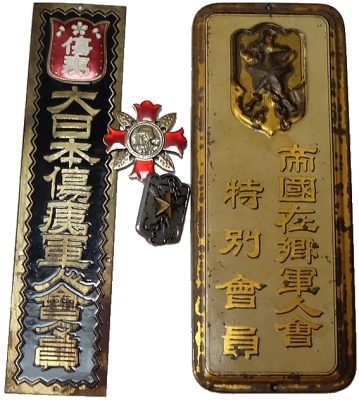
During and after the Korean War, there were numerous organizations to help Bereaved Families deal with their loss.


